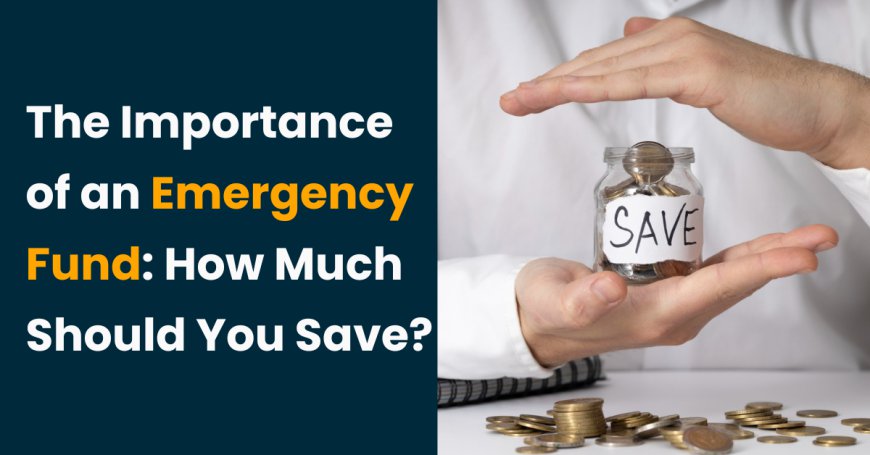The Importance of an Emergency Fund: How Much Should You Save?

An emergency fund acts as a financial safety net during unexpected situations like job loss, medical emergencies, or car repairs. It's not just a smart financial strategy; it's a necessity for ensuring peace of mind. But how much should you save? Let’s explore this vital aspect of personal finance in detail.
Why Is an Emergency Fund Important?
Life is unpredictable, and emergencies can happen when you least expect them. Without an emergency fund, you might rely on credit cards, loans, or deplete your savings, which can lead to long-term financial stress.
Key Benefits of an Emergency Fund
-
Financial Stability: Provides a buffer against unforeseen expenses.
-
Reduced Stress: Peace of mind knowing you’re prepared for emergencies.
-
Debt Prevention: Helps avoid high-interest debt during crises.
How Much Should You Save in Your Emergency Fund?
The amount you should save depends on your financial situation and lifestyle. While there’s no one-size-fits-all answer, financial experts often recommend the following guidelines:
Must Read: Top 10 Finance Companies in India
Step 1: Start Small and Build Gradually
If saving seems daunting, begin with a smaller goal, such as ₹20,000 or $500, depending on your currency. Over time, increase this amount as your financial capacity grows.
Step 2: Calculate Your Monthly Expenses
Track your essential monthly expenses, such as:
-
Rent or mortgage payments
-
Utilities
-
Groceries
-
Insurance premiums
-
Transportation
Step 3: Aim for 3 to 6 Months of Expenses
A standard recommendation is to save 3 to 6 months’ worth of essential expenses.
-
For Single Individuals: Start with 3 months of expenses.
-
For Families: Aim for at least 6 months of expenses to account for higher living costs.
Where Should You Keep Your Emergency Fund?
It’s crucial to store your emergency fund in an accessible and secure place.
Best Options for Storing Your Emergency Fund
-
High-Interest Savings Accounts: Offers liquidity and interest on your savings.
-
Money Market Accounts: Combines safety and slightly higher interest rates.
-
Fixed Deposits (with withdrawal options): A safe choice if it allows partial withdrawals.
Tips for Building Your Emergency Fund
1. Set a Realistic Savings Goal
Break your total savings target into smaller monthly or weekly goals.
2. Automate Your Savings
Use automatic transfers to a dedicated savings account to ensure consistency.
3. Cut Unnecessary Expenses
Identify and reduce non-essential spending to accelerate your savings progress.
4. Avoid Dipping into the Fund
Only use your emergency fund for genuine emergencies, and replenish it immediately after use.
Conclusion
An emergency fund is a cornerstone of financial security. By saving 3 to 6 months of essential expenses and keeping the money accessible, you’ll be better prepared to handle life’s unexpected challenges. Start small, stay consistent, and make your financial stability a top priority.
Related Post, Top 10 NBFCs in India
